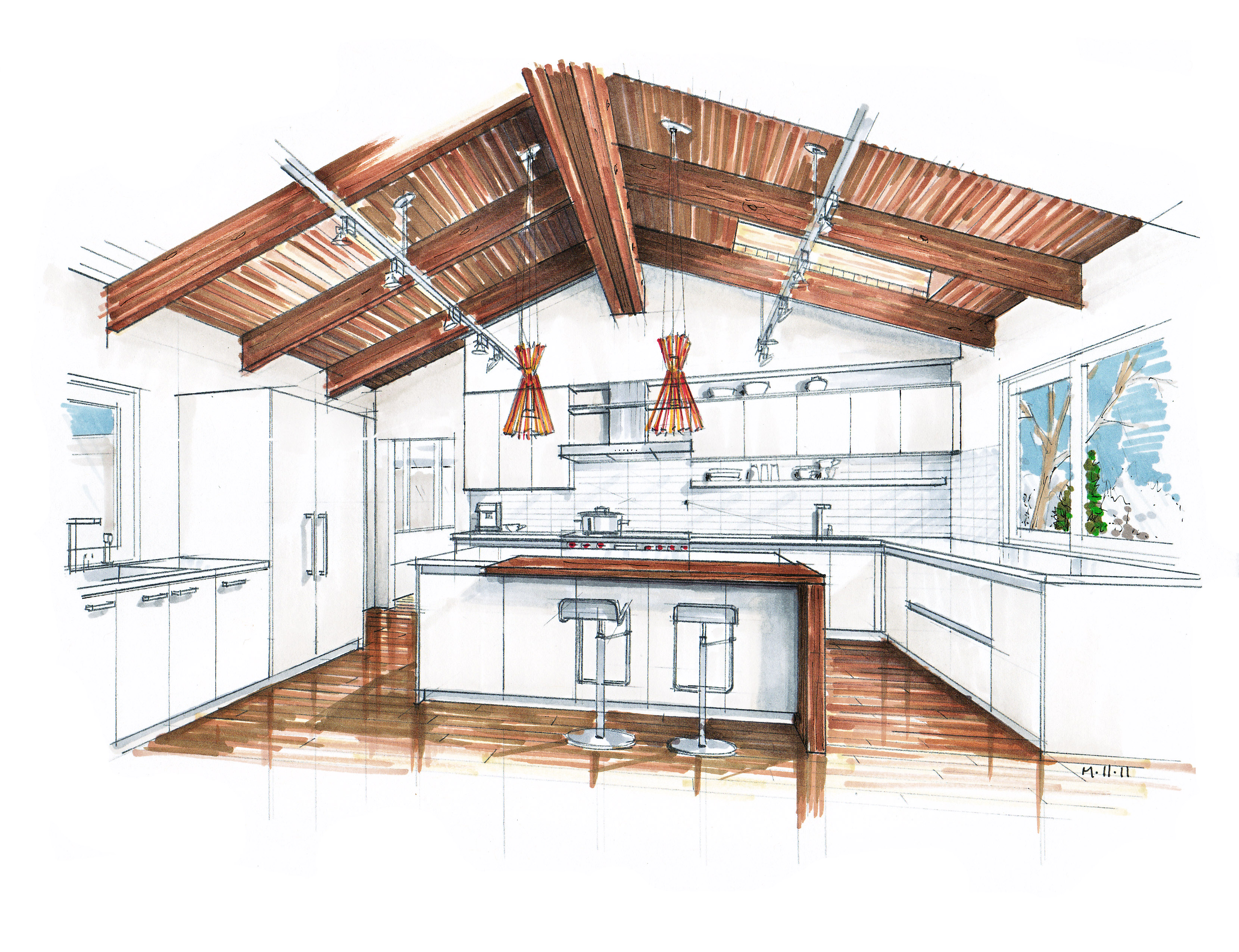The most common trend for counter
tops has been solid surface materials like granite or quartz, but what is
another option if you are looking for something different. My answer is
wood! Wood counter tops are a sustainable and attractive option to add
warmth and character to any kitchen. Unfortunately many people have
misconceptions about wood in kitchens and overlook it as a counter material.
First of all people question wood's
durability in the long-run. There are a couple factors effect how durable
the counter wood be. The first is the style of counter
top you choose. The main two are Edge Grain and End
Grain. Edge grain butcher block
tops have parallel wood rails that run the length of the piece. End
grain butcher block tops are created by fusing together the
end pieces of wood rails into a checkerboard pattern. End grain is considered
the stronger and more durable style of the two. Edge grain was traditionally
used by butchers because it could withstand the hard beating from meat
cleavers without damaging the surface of the meat block. For a in-home application the edge grain style
is more than durable enough.
 |
| Edge Grain vs. End Grain |
The next thing to consider is the type of wood you would like in your kitchen. The common types are Hardwoods like walnut, oak, maple, cherry, zebrawood, wenge, bamboo, or a mix of 3+ of these woods together. Each has its own unique look and can add charming touch to your kitchen. Bamboo is the most sustainable choice, but using certified woods with the Forest Stewardship Council (FSC) seal ensures that the wood is harvested sustainable and replaced with a new tree. Based on what wood you choose you can also save yourself thousands of dollars compared to a stone like granite.
How you finish your counter top will determine how you
use your counter top. Sealers are a
great idea to keep water from damaging the wood, but you won’t be able to use
the wood as an actual cutting board. The
sharp knife edge can ruin the seal and let water to the wood. Unsealed and oiled is the way to go if you
are wanting a usable cutting surface.
This is a much more natural looking finish, the oil brings out the wood
grain and keeps the wood looking healthy.
Unfortunately this doesn’t protect the wood from water and can allow
black spots to appear from standing water.
The good thing is, wood can always be sanded and refinished if you ever
damage your counter. Standing water is
most common around the sink, so if you install a sink that is self-contained
and maybe has a draining board you won’t have to worry about damaging the wood.
This keeps all
the water in the sink and off the wood finish.
You still never want to put anything hot on a wood counter, but with
thought in your design ahead of time, your counter will stand heavy ware for a
long time.
The biggest misconception about wood
counters is that they aren’t as clean as using something like granite. However wood is naturally anti-bacterial. If you keep your counters clean and oiled
they will fight germs off naturally. You
won’t want or need to use harsh chemicals, which increases the sustainability
aspect of wood. This reduces the VOC’s
in your home and creates a healthier environment for you and your family.
After everything you can see why
wood is such a good option as a kitchen surface in your home. It is sustainable, affordable, and naturally
anti-bacterial. In my opinion the best
aspect of wood is how beautiful it is, and wood gets more beautiful as it
ages. I can’t see why you wouldn’t want
this long-tested product in your kitchen design. Enjoy!
 |
| Installation Day |
 |
| 1 Year Later |






